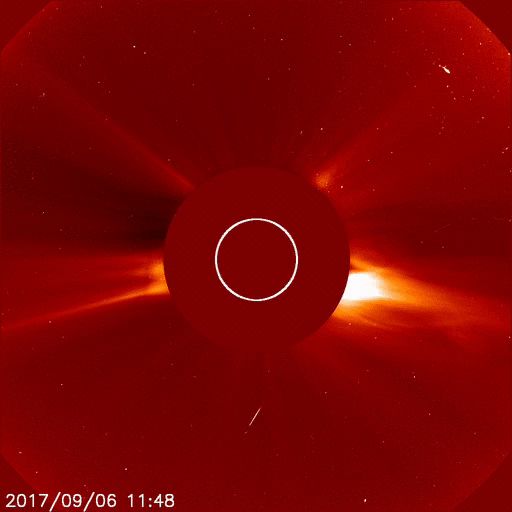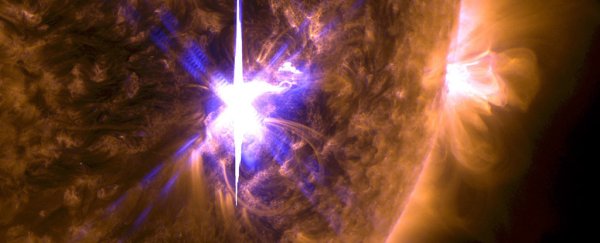The sun has just erupted in an absolutely massive solar flare, so big that it knocked out radio comms here on Earth.
Actually, it spat out two X-class flares, on the morning of 6 September EDT. These are the biggest class of solar flare there is, and the largest explosions in our solar system, with loops of plasma tens of times the size of the Earth.
The first one came in at X2.2 at 5.10am EDT. Then, just a few hours later at 8.03am, it dropped an absolutely monster X9.3 flare, the largest since 2005. You can watch the resulting coronal mass ejection in the gif below.
Both flares erupted from an active region called AR 2673, which also produced an M-class flare a few days ago. Of the two sunspot regions currently active, both flares came from the smaller - a size of just 7 Earths by 9 Earths.
This solar cycle, the sun's 11-year periodic activity cycle, began in 2008. It has been unusually quiet, with very low sunspot activity. But although we're moving into solar minimum, the quietest period of the cycle, activity can still occur. And how.
 ESA/NASA
ESA/NASA
Solar flare activity has interesting effects on Earth. This one knocked out high-frequency radio, according to the NOAA, and degraded low-frequency navigation.
The particles from the CME can also cause aurora activity as they interact with Earth's magnetosphere, so keep your eyes on the skies. They should be arriving within a few days.
The most recent X9 flare took place in 2006, at X9.0. In 2005, a massive X17 flare erupted. The biggest solar flare of all time was a humungous X28 back in 2003, which luckily was at an oblique angle to Earth, so we managed to avoid the full brunt. Even so, it managed to overload all NASA's solar sensors.
How long sunspots last varies. The longest-lived sunspot on record hung around for six months, so it's entirely possible we haven't heard the last from AR 2673.
